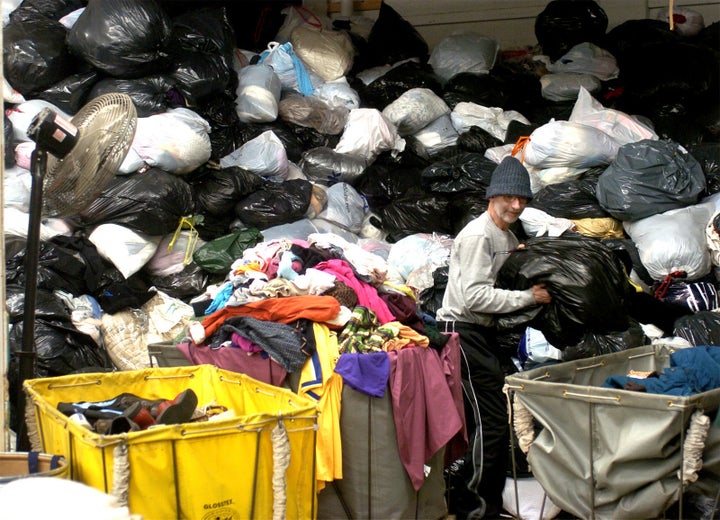As part of HuffPost’s “Reclaim” project, HuffPost Style will focus the month of September on simple ways to educate yourself on becoming a better consumer.

The average U.S. consumer will throw out 81 pounds of their clothes this year, according to a recent survey by the resale company Savers, and 95 percent of all that waste should instead by reused or recycled. Donating our clothes seems like an obvious solution to this problem, right?
But how do we know what we can or can’t donate at big chains like Goodwill, The Salvation Army or Savers? Turns out it’s not that complicated.
Here are the clothes you shouldn’t donate:
1. Wet, moldy or contaminated items.
“If you are thinking about donating something to Goodwill that is too worn or damaged for anyone to wear, most Goodwill organizations would recommend repurposing those items at home,” Charlene Sarmiento, the public relations program manager for Goodwill Industries International, told HuffPost in an email.
Tasha Lewis, a faculty fellow at Cornell University’s Atkinson Center for a Sustainable Future, pointed out that “it’s kind of nice not to give wet things or greasy things that can mildew,” adding that she would “hesitate to throw it in the trash, because there’s a rag market where they’ll tear it up. ... Overall it’s better to donate it so it gets sorted than just directly dispose of it in the trash or landfill.”
AND THAT’S IT.
That dirty old T-shirt? Totally donate-able. The pants with the mysterious pocket stain? Yep. They’ll take that, too.
Big box thrift stores take just about any dry, non-moldy piece of clothing ― even if they don’t end up putting it on store shelves.
There’s “a whole distribution channel for things that can’t be worn as clothing” anymore, Lewis said, describing a system run by rag traders and unseen by many consumers, that helps divert clothing and other textiles away from landfills.

And the system works for you:
“The overwhelming majority of people donate clothing and textiles that are still wearable,” Sarmiento said, and Goodwill’s lengthy sorting process gives clothes plenty of chances before finally getting cut up and sold in 25- or 50- pound bundles of “Good Wipes” (the company’s term for industrial cleaning cloths), or baled and sent to overseas buyers, which is what happens at Goodwill stores in Portland, Maine.
Still, of course it’s best to donate clothes people would most likely wear. As Goodwill puts it, “Donating items that are in working condition, contain all of their pieces and parts, and are free of stains and rips is the best way to ensure that your goods do the most good.”
Just don’t throw it out.